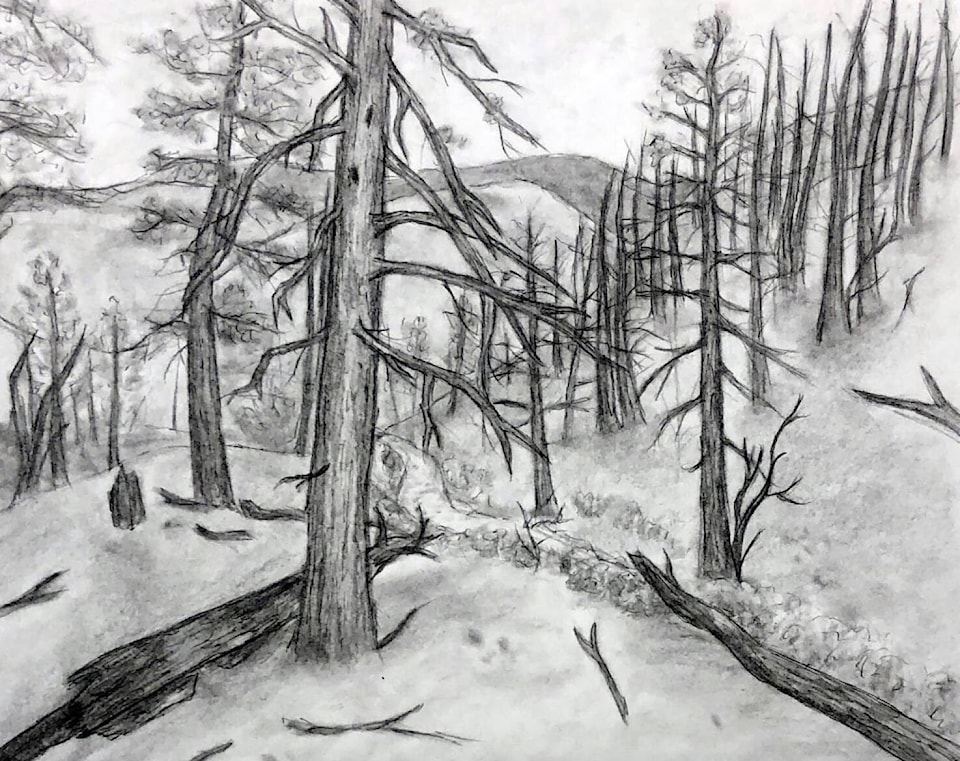A Desert Sands Community School class project has blossomed into a book on the 2017 Elephant Hill wildfires.
The book, called Elephant Hill Wildfire: Community Stories from 2017, details local experiences from people throughout Cache Creek, Ashcroft and Clinton during the devastating fire. An estimated 191,865 hectares between July 6 and Sept. 27, 2017. In that time, it displaced 65,000 people from their homes. About 120 houses were burned to the ground.
“The collection of stories begins with the personal accounts of the firefighters who were interviewed, and is loosely organized according to the early progression of the fire itself as it burned its way north from the Ashcroft Indian Band Reserve and Elephant Hill,” teacher Brenton Close said in an email.
“The stories represent different small communities in the area and a cross-section of roles within each community, including the Ashcroft Indian Band, the Village of Ashcroft, Boston Flats, the Village of Cache Creek, Bonaparte First Nation, 16-Mile, Loon Lake, and Clinton.”
Close and Breana Paulos - whose Grade 8/9 students put together the book - declined an interview with the Journal. However, in his email, Close said the pair wanted their students to create a record of the devastation of the Elephant Hill wildfire that continues to affect their community.
The book is based on student interviews of key members of the community during the wildfires. They started by postings ads in the Journal and from there found people recommended by others to gain “a cross-section of the affected communities.”
Most of the interviews, due to COVID-19, were conducted by the students via phone or Zoom Calls. Prior to making the calls, Close said he and Paulos had the students practice their interviewing skills including being respectful, writing down good questions and asking for permission for the interviews to be recorded.
After compiling the transcripts from the interviews, the students then condensed them into events to form the stories. Close said they were several rounds of editing before the final copies of the stories were sent to those involved for approval. Several also submitted photographs that were included in the book. The cover art was drawn by Moira Kopanyas.
“We recognize that there are more stories out there than we could ever collect and record, but were really proud of many of our students’ work and with the way they interacted with community members throughout the process,” Close said.
